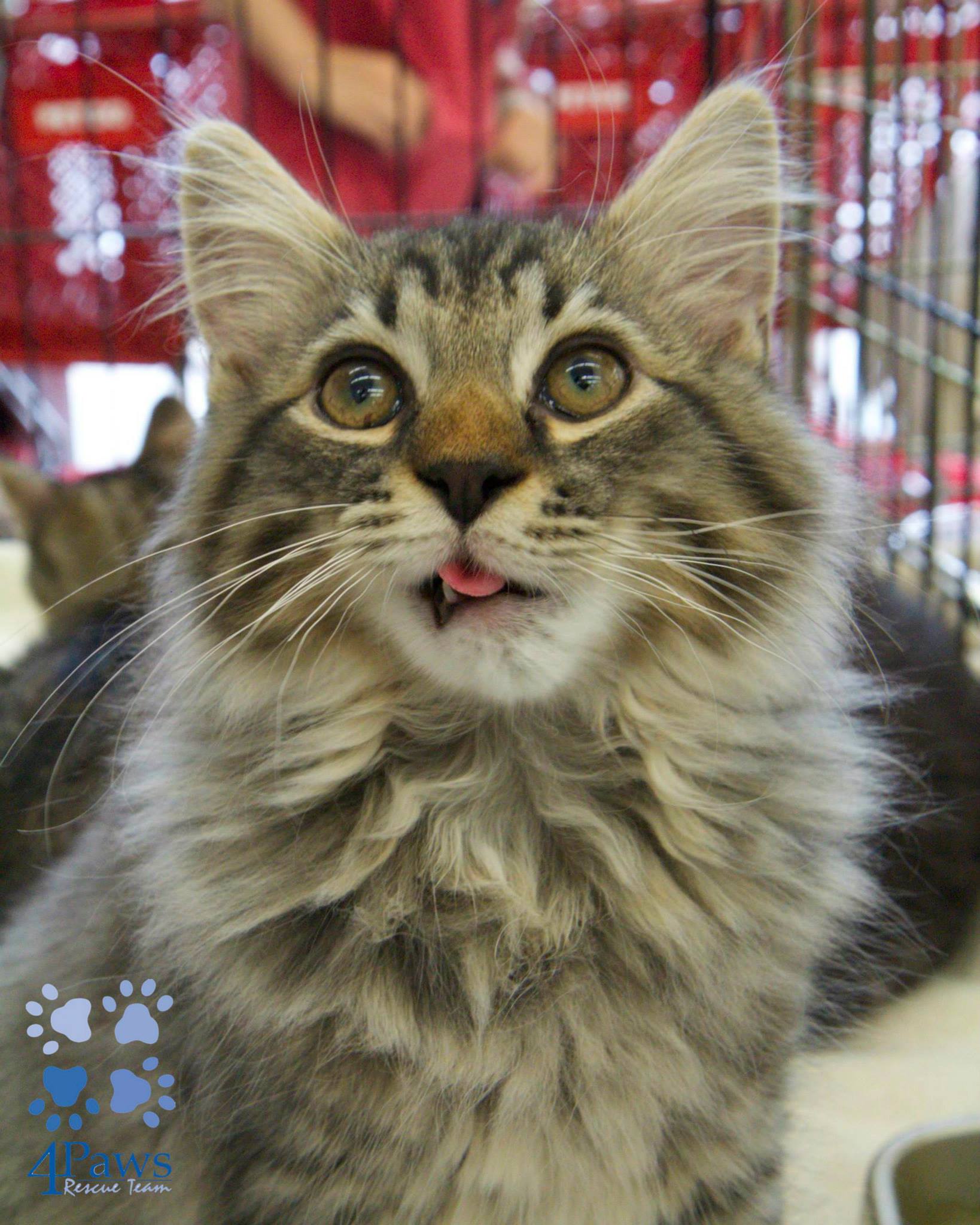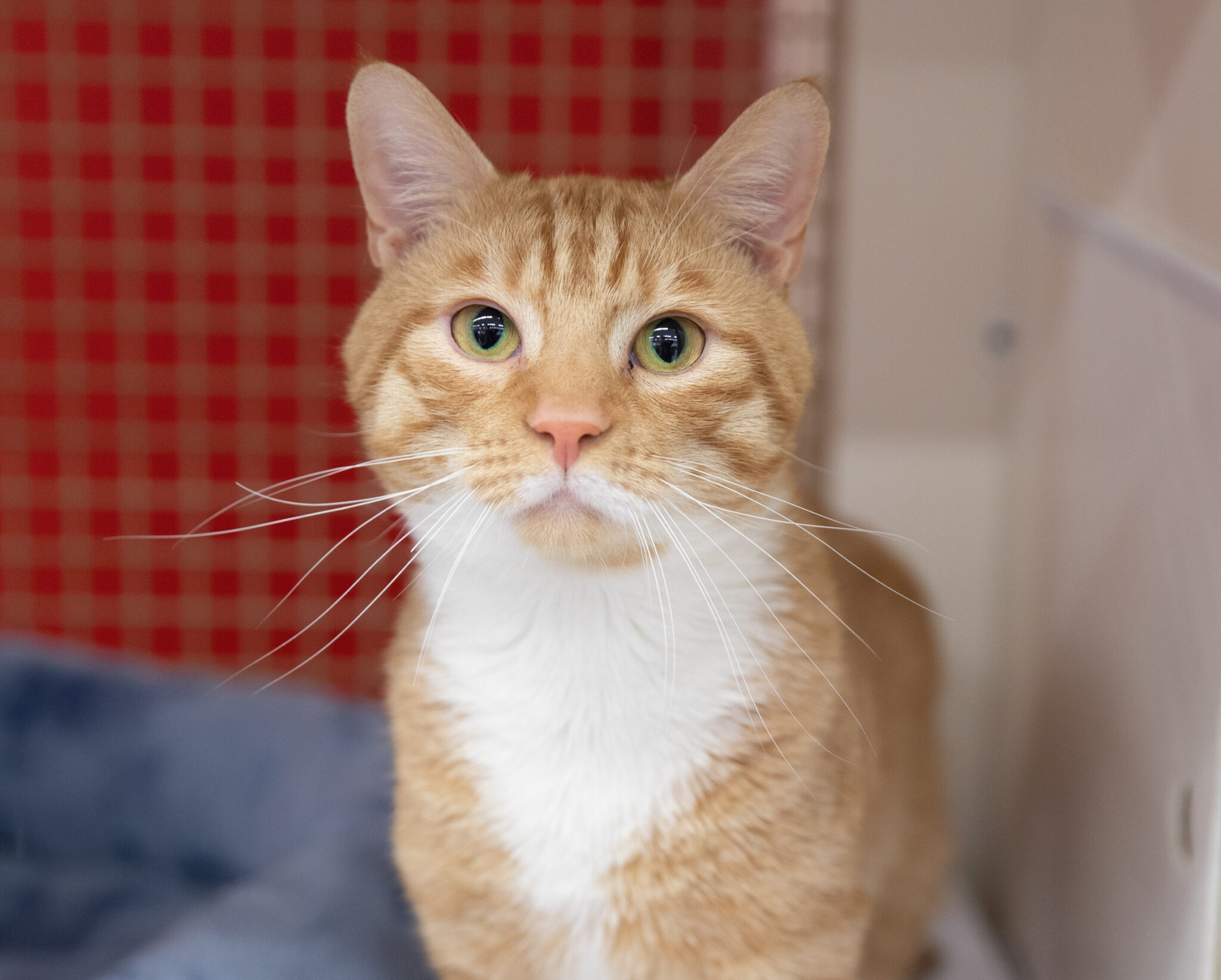This blog’s content is from the July/August 2022 Best Friends magazine. It is authored by Samantha Bell, Best Friends Animal Society’s cat expert.
Once I learned that mother cats produce oxytocin, the “love hormone,” when nursing their kittens, everything clicked for me. It’s part of what causes them to dedicate more than a month of their lives to nurturing their helpless young around the clock.
I have gathered and tested many fun and helpful tips to share in the hope that more humans can experience this magic. Here are my top five kitten fostering tips.
1. When fostering kittens, more than one is best.
There are so many things that kittens learn from each other that help them become the best cats they can be. This includes all kinds of behavioral lessons, from social norms to hunting techniques. That’s why it is always better to foster at least two kittens at a time. If my only option is a single kitten, I bring that baby home and then ask to be put on the list to foster the next single kitten who comes in. I love watching my current three-week- old foster kittens, Fig and Flower, bite each other’s tiny faces because I know they will grow up understanding that biting should only happen with other cats, not humans. In about a week, they will start wrestling and playing rough with each other, furthering their understanding that rough play is meant for cats and only cats. Cats are born predators; they have claws and teeth and want to use them. By starting them off in life with a feline friend, they will be less likely to use their hunting techniques on you.
And let’s just bust a myth while we’re at it: There’s no need to dedicate an entire room to the kittens. They can do perfectly well in a small space — a bathroom, for example.
2. Be like mama
If you have kittens who need to be bottle-fed, try to help them feel like they are actually drinking from their mom. When kittens are nursing from their mom, their environment is warm, dark and soft. And they are lying on their stomachs at a slightly upward angle, usually with their front legs stretched forward. So, I set up a bottle-feeding station to replicate this scenario. I use a heating pad (set on low) covered by a soft blanket, with a toddler-sized neck pillow on top that is also covered in a fluffy blanket. This way, the kittens can be supported at an angle by soft, warm “fur” while drinking. I hold out my thumb and pinkie so they can grasp the fingers with their paws and keep their arms stretched out in front while drinking. I try to avoid having bright lights shining on them, and sometimes I even put a cardboard box in front of the station to keep it as dark and cozy as possible.
3. Find each kitten’s preferences.
Every kitten is unique and prefers meals a certain way, so get nerdy with it. I make notes of every little detail and figure out how to best help my foster babies thrive. I fostered a hilarious kitten named Rosebud who wanted her formula hotter than any kitten I have ever known. Warm formula? No, thank you. She would yell at me until it was heated to her liking. To figure out what Rosebud preferred, I wrote down how I prepared her formula and how it went until I found the literal magic formula. Here is a sample of some actual notes. (See? Get nerdy!)
“Heated mug of water in microwave for 1 minute and 30 seconds. Let bottle sit in hot water for 1 minute. Drank well.”
“Heated mug of water for 2 minutes. Let bottle sit in hot water for 45 seconds. Drank even better.”
Because every baby is different and every microwave heats differently, it takes some work. And, of course, you should err on the side of caution when it comes to formula temperature. But once you find a kitten’s magic formula, it will save you time and help the baby drink as much as possible.
4. Train your babies to love their bottle.
As a cat trainer, I love showing people that cats can be trained through positive reinforcement to perform all sorts of behaviors — from fun things like doing a high five to helpful things like going in a carrier and coming when called. But did you know that bottle babies can be trained to drink from their bottle better? I accomplish this by ensuring that only positive experiences happen at the feeding station. That way, their hearts and minds (and mouths) will be open while there.
A bottle baby named Macaroni helped me to learn this lesson. Macaroni was on several medicines for tummy issues. At first, I fed him his bottle at the feeding station and then gave him his medicine there, too. The medicine clearly tasted awful, and he hated it. The next time I gave him his bottle, he pulled away and shook his head. He was worried that it was medicine going into his mouth and was not as eager to drink from his bottle.
That’s when I decided to give only bottles and love at the feeding station. Macaroni still got his medicine, but it happened on a different table and on a different blanket. Once he realized that only good things happened at the feeding station, he was back to drinking well and without hesitation.
Another way to ensure that they associate the feeding station with only positive things is to always smell the formula and the bottle before you present it to the kitten. Formula can turn sour even if it was prepared within the last 24 hours. Neonatal kittens’ eyesight and sense of hearing are not as fine-tuned as their sense of smell. If that bottle smells unpleasant, they may hesitate to drink from it the next time.
5. Be strategic about catching your zzz’s
As caregivers, we have to remember to also take care of ourselves. Sleep is crucial, especially when we have bottle babies.
There are two tricks I have for maximizing the amount of time I get to sleep. First, I always feed my kittens right before I go to bed. And I don’t mean around bedtime; I jump straight into bed after
I feed them. I do absolutely everything before that last bottle-feeding of the day: brush my teeth, wash my face, get in my pajamas, feed my cats, prepare the kittens’ next bottle, turn off all the lights except the ones I need for feeding. Then I feed the kittens. If you only have three hours until the next feeding, every minute of sleep counts. (This phase is not forever. It only lasts until the kittens are approximately four to five weeks old.)
Second, I always sleep in 90-minute intervals. This is considered a full sleep cycle, allowing you to wake up after your REM state, instead of during, and feel as rested as possible. In theory, sleeping for three hours (two 90-minute intervals) should feel better than sleeping for four, even if it does not always feel like it.
When you foster kittens, you may think all you’re doing is providing a place for a few sweet babies to hang their hats in the early days of their lives. But it’s so much more than that. In fact, you’re altering the trajectory of their lives, making it possible for them to grow and thrive and get adopted. And the bonus of this lifesaving act? A pretty significant daily dose of the love hormone for you, too.




